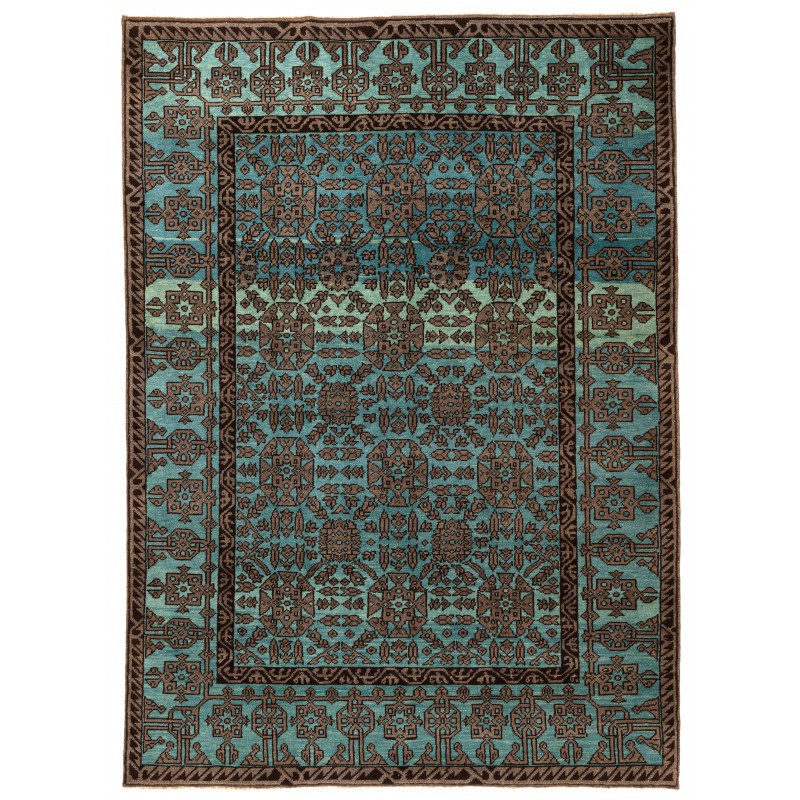
売り切れ
ディヴリギ・ウル・モスクの絨毯 The Divrigi Ulu Mosque Carpet
614,000円
税込み: 614,000円
- Stock: 売り切れ
- Model: C50351
- サイズ: 230cm x 167cm
カーペットの出典は、アフメト・エルトゥーグの著書『トルコの絨毯、13世紀から18世紀』(1996年)の図版9からです。この13世紀のカーペットは、中央アナトリアのディヴリギ・シヴァス地域にあるウル・モスクから来ています。セルジューク朝時代は、アナトリアの美術と建築の最高点の一つを示しており、この時代のトルコ結び織りの絨毯の発見によって大きな興奮が起きたのは驚くことではありません。1905年には、フレドリク・ロベルト・マーティン(1868-1933)がコンヤのアラ・エッディン・モスクで7つの例を見つけました。コンヤはサルタナートの中心に位置する最も重要なモスクであり、12世紀中頃から13世紀中頃まで段階的に建設されました。一般的には「セルジューク」または「早期コンヤ」の絨毯として言及されます(ただし、これらは後のコンヤに帰属される絨毯とは関連しません)。これらは早期アナトリアの最も重要な絨毯と見なされるようになりました。これらの模様は建築には反映されず、セルジューク朝の芸術を代表するものではありません。それらはおそらく当時中央アナトリアに住んでいた遊牧民または半遊牧民のトルクメン族の作品であると考えられます。したがって、「セルジューク朝時代」というラベルがより正確です。4つは大きくても不完全であり、他の3つは破片化しています。これらは1911年にイスタンブールのエヴカフ博物館に移され、その後、トルコ・イスラム美術博物館に移されました。この絨毯のデザインは解釈され、柔らかな色がデザイナーによって選ばれました。
全部で3色使っています。
- Feldgrau 414 (カモミール - 藍)
- Rare Grey 105 (羊そのままの色)
- Dark Brawn 316 (羊そのままの色)
上の番号は私たちのカラーコードです。()の中は、主な草木染めの材料です。
